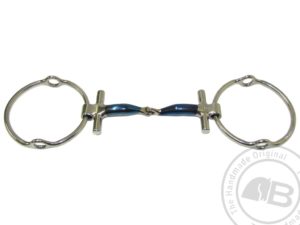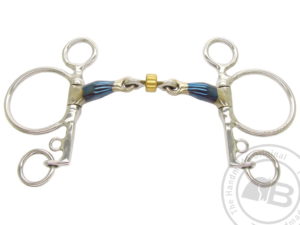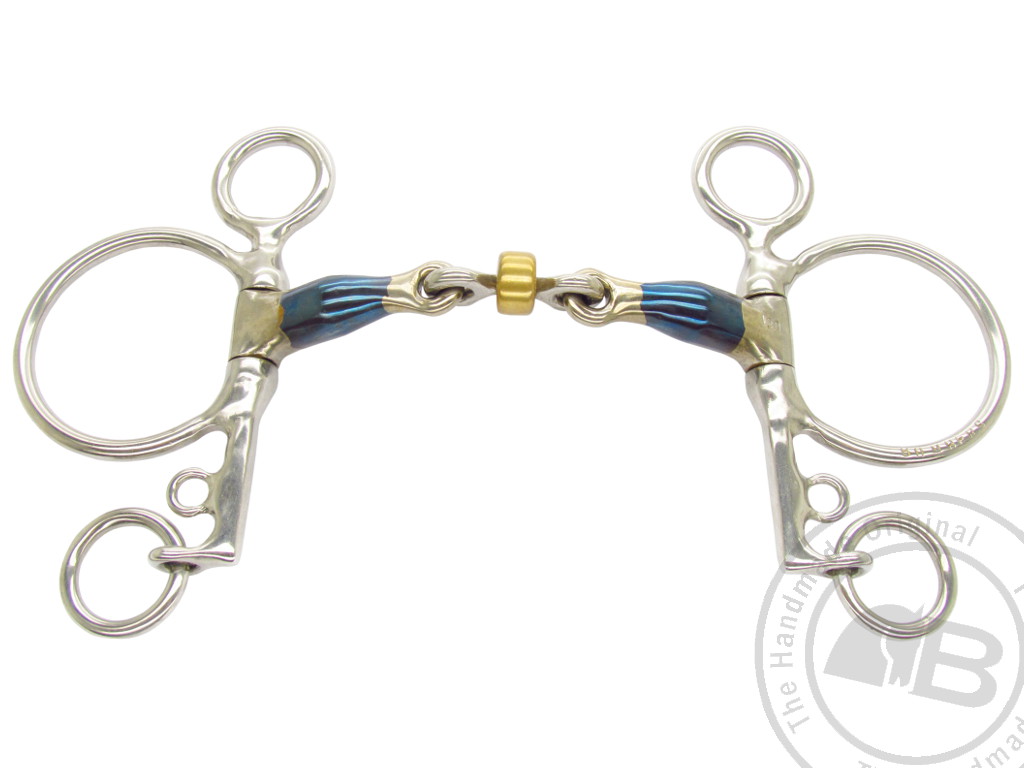
Hunting in the UK
Our Facebook inbox has a question from Martha in Kent, UK. Bombers’ Claire Lund offers some assistance:
I borrow a horse from my own pony’s yard to take hunting; (not pictured); she’s a twenty year old, 15hh cob, and knows her job very well. She is hacked out in a Copper Roller Snaffle, plus a Grackle noseband, but when the family hunts her, they ride her in an old Cheltenham Gag as she’s strong; but she still leans down on the bit, and pulls. I am wondering if there’s another bit I could try?
 Let’s firstly look at the Gag cheekpiece bit that your ride hunts in.
Let’s firstly look at the Gag cheekpiece bit that your ride hunts in.
A Gag works by lifting the bit in the mouth, in order to encourage the head to be raised. This cheekpiece is often used on strong horses that like to lower their heads in order to escape the action of the bit in the mouth, and that get very strong.
(We have shown a T-Bar Gag Snaffle, for illustrative purposes.)
When pressure is applied, the bit is lifted in the mouth and poll pressure is applied.
The bit also rotates slightly in the mouth, putting more pressure on the tongue and bars.
Have you tried a Pelham bit? It is best used with two fixed reins, with the first attached to the larger of the two rings, and the second rein attached to the ring at the bottom of the shank.
When the first rein is used, the Pelham puts slight pressure on the poll, and above all, pressure on the horse’s mouth, depending on the mouthpiece chosen.

The Buster Roller Pelham with a 55mm shank.
The second rein introduces leverage and curb pressure, which is the main difference to the Gag you have used. It is important to remember that the greater the distance between the cheek piece slot and the mouthpiece, the greater the poll pressure, while the greater the length of shank, the greater the amount of leverage.
We have designed a range of Pelhams with either a 75mm and 55mm; the latter reduces the amount of leverage, and suits horses with shorter muzzles.
Regarding the mouthpiece, if the mare you ride hacks in a jointed roller bit, this is promising regarding experience of moving parts. There are various mouthpieces available in the Bombers Pelham range. The Buster Roller mouthpiece could be considered (left), as it offers precise, accurate aids. It has a central copper roller link shortened to 40mm, increasing bar and tongue pressure.
The increased pressure on the bar will help to lift the horse’s head, and the roller will increase pressure on the tongue. This bit is available in a 55mm shank, which may suit her compact shape.
 Another option may be the Bombers Elliptical Pelham (right), which has a 75mm or 55mm shank. When the rein is used, this mouthpiece wraps across the tongue, creating tongue pressure and reducing bar pressure. If the mare goes fairly well when hacking in the jointed roller bit, this is a promising start in terms of acceptance of tongue pressure, as the Elliptical has a central roller.
Another option may be the Bombers Elliptical Pelham (right), which has a 75mm or 55mm shank. When the rein is used, this mouthpiece wraps across the tongue, creating tongue pressure and reducing bar pressure. If the mare goes fairly well when hacking in the jointed roller bit, this is a promising start in terms of acceptance of tongue pressure, as the Elliptical has a central roller.
This bit can suit a horse that pushes the bit with its tongue as it encourages the horse to draw its head back and tuck its chin in. (Pelhams should always be used with curb chains, and Bombers Pelhams are supplied with one.)
It is advisable to try a new bit at home before taking it out hunting; the pelham’s curb action could affect how the mare takes off to a jump, so it would be worthwhile letting her figure this out over some practice fences.
Our UK distributor Equine Management is not too far from you, in Sussex, and has a retail arm, so perhaps you could contact them for further info?
#bombersbits #bombersbluebits #teambombers #bombersbitsbringbalance



